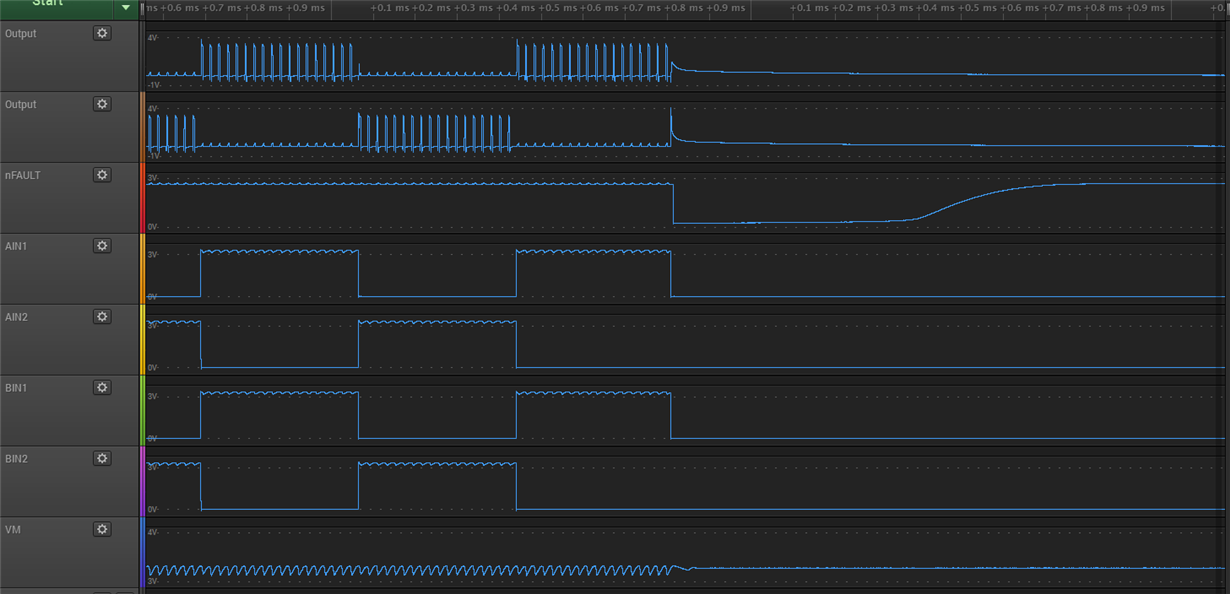Hi,
I'm using DRV8833 to create simple waveform. As you can see in following capture (upper one is output and bottom one is input), it is quite unstable. I want to see one straight line but it keeps fluctuating. I just captured one side but the other side of output shows pretty much same result.
Any comment or feedback would be greatly appreciated.
Regards,
Brian



